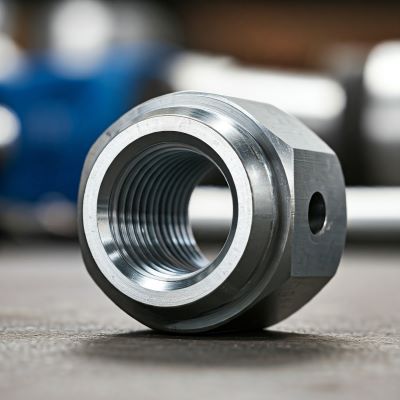In a world where reliability and safety are paramount, the integrity of bolted joints is often overlooked. Loose fasteners can lead to catastrophic failures, compromising safety, efficiency, and productivity. To address this challenge, innovative nutlock solutions have emerged as indispensable tools for securing critical components.
This blog delves into the world of nutlock technology, exploring its applications, benefits, and the latest advancements in the field.
What is Nutlock and How Does It Work?
Nutlock is a generic term for various devices and techniques designed to secure nuts and bolts in place, preventing them from loosening due to vibration, shock, or thermal expansion.
Key Features That Make Nutlock Reliable:
➡️ Friction-based locking: Creates a mechanical interference between the nut and bolt threads.
➡️ Elastic deformation: Uses the elastic properties of the material to maintain a tight fit.
➡️ Chemical bonding: Employs adhesive or sealant to create a secure bond between the threads.
Understanding the Need for Secure Fastening
In countless industries, from automotive to aerospace, construction to manufacturing, secure fastening is paramount. Loose fasteners can lead to a cascade of problems, including:
➡️ Safety hazards: Loose components can pose risks to both workers and end-users.
➡️ Equipment failure: Malfunctioning machinery can lead to costly downtime and production losses.
➡️ Structural integrity compromise: Weakened structures can lead to catastrophic failures.
Nutlock emerges as a reliable solution to these challenges. By preventing loosening and vibration, nutlock technology ensures the integrity of bolted joints, enhancing safety, performance, and longevity.
Applications of Nutlock in Different Industries
➡️ Automotive and Aerospace: Nutlock is crucial for ensuring the safety and reliability of vehicles and aircraft.
➡️ Industrial and Manufacturing: It is used in heavy machinery, pumps, motors, and other industrial equipment.
➡️ Construction and Structural: Nutlock secures structural components like bridges, towers, and buildings.
Types of Nutlock Solutions
➡️ Permanent Nutlock: Creates a permanent bond between the nut and bolt, ideal for high-vibration applications.
➡️ Removable Nutlock: Allows for disassembly and reassembly, suitable for maintenance and repair.
➡️ High-Strength Nutlock: Designed for heavy-duty applications that require exceptional holding power.
➡️ Specialized Nutlock: Tailored for specific environments, such as those with extreme temperatures or corrosive chemicals.
Benefits of Using Nutlock for Fastening
➡️ Improved Safety and Structural Integrity: Reduces the risk of accidents and equipment failures.
➡️ Extended Lifespan of Equipment and Machinery: Minimizes downtime and maintenance costs.
➡️ Reduced Maintenance and Repair Costs: Prevents costly repairs and replacements.
Check out these other resources to gain a deeper understanding on hydraulic system ⬇️⬇️⬇️
The Strength and Versatility of ASA Flanges
The Role of a Steel Plug in Securing Hydraulic Lines
Keep Systems Clean with Hydraulic Flat Face Couplers
How to Choose the Right Nutlock Solution
➡️ Evaluate Fastening Requirements: Consider factors like load capacity, vibration levels, temperature extremes, and environmental conditions.
➡️ Compatibility with Materials and Threads: Ensure the nutlock is compatible with the materials and thread sizes used in your application.
➡️ Balancing Cost and Performance: Select a nutlock solution that offers the desired performance without breaking the budget.
Tips for Effective Application of Nutlock
➡️ Prepare Threads: Clean and deburr threads to ensure proper adhesion.
➡️ Correct Usage Techniques: Follow the manufacturer’s instructions for optimal performance.
➡️ Avoid Common Mistakes: Use the correct torque and avoid over-tightening.
Comparing Nutlock with Alternative Fastening Methods
➡️ Nutlock vs. Thread Locking Compounds: Nutlock offers a more reliable and durable solution, especially in high-vibration environments.
➡️ Mechanical Fastening vs. Adhesive Solutions: Nutlock provides a combination of mechanical and chemical locking, offering superior performance and flexibility.
Conclusion
By understanding the importance of secure fastening and leveraging the power of nutlock technology, you can enhance the safety, reliability, and longevity of your products and structures. By choosing the right nutlock solution and applying it correctly, you can ensure that your fasteners remain tight, even in the most demanding conditions.
Post time: Nov-27-2024


